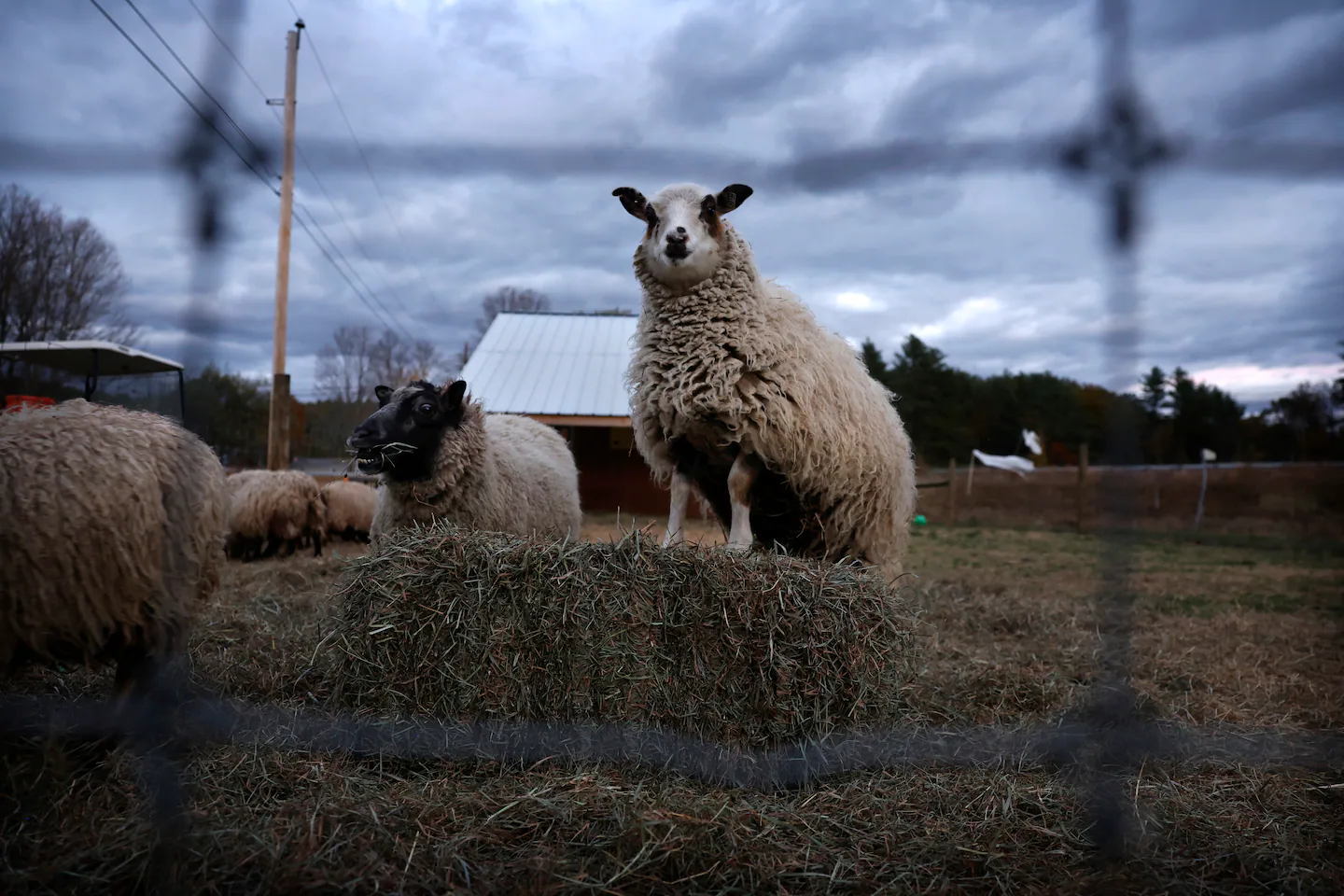Copyright The Boston Globe

Falcone is part of a growing movement of small-scale sheep farmers in the region turning sheep’s wool into yarn to sell as more consumers are demanding local, quality materials. For farmers, selling wool and yarn can provide an additional source of income to help keep their farms afloat. For consumers, local wool is a high-quality, plastic-free alternative to industrial fibers created around the world. “There’s really a movement now that you can kind of feel in the industry,” said Abigail Henderson, outreach and education specialist at the Hudson Valley Textile Project, a regional network based in Mechanicville, N.Y., that works to strengthen the textile supply chain. As consumers become aware of microplastics in fashion, local wool and fibers offer a natural alternative that can benefit the environment through regenerative farming practices, Henderson said. Sheep can maintain pastureland by grazing on it, while returning nutrients to the soil through their fertilizer-rich droppings. Some initiatives in the region even verify the climate benefits of local fiber. In 2022, wool production increased by about 63,000 pounds across Massachusetts, New Hampshire, New York, Rhode Island, and Vermont compared with 2017, an about 17 percent increase, according to the most recent data available from the Census of Agriculture conducted every five years. Across Maine and Connecticut, wool production by the pound decreased by about 11,400 pounds over that same time period. Meanwhile, there are now more than 20 spinning mills in the Northeast, according to a regional directory. While the market price for wool has been around 30 cents per pound, Henderson said her organization’s wholesale rates now start around at least $1 per pound, which can make it more profitable for farmers to sell their wool. “The demand for the fiber is going to help build the profitability for the farmer,” Henderson said. New England’s textile industry flourished in the early part of the 20th century, with hundreds of mills in the region. But in the 1930s, the local industry began to crash, and many of the old mills shuttered in the following years. By the 1960s, mill employment in New England had nearly disappeared. But in recent years, experts said they’ve seen signs of revitalization, with new mills starting to open their doors. Falcone started raising sheep about 18 years ago so her five daughters would grow up around the animals. For her, sheep were just the right size, docile and personable, and presented the possibility of plenty of hands-on projects. “It’s always been important to me to learn how things work, how to make your clothes, and where you get your food,” she said. “I think it’s a really valuable thing for kids to learn.” But as the flock grew, so did the expense of maintaining it. “Can we at least break even on this if we get yarn made?” Falcone wondered. From there, her small yarn business was born, named for her five daughters, who still help out with farm chores. At the family’s seven-acre property, about a dozen sheep, whom Falcone calls her “shop girls,” eagerly greet visitors. “Anytime people come and they don’t pet the sheep, there’s a lot of squawking,” she said. Falcone said she has an established clientele that keeps the shop busy when it opens on weekends. “Slow fashion is becoming trendy,” Falcone said. Transforming a sheep’s raw fleece into yarn that can be spun into clothing, blankets, or home goods is an involved process, requiring specific expertise and infrastructure. Gwen Hinman has been shearing sheep for 25 years, and now it only takes her a matter of minutes to remove a sheep’s woolly fleece. Her business is almost too busy, she said, with year-round demand for her services. Depending on the breed of sheep, Hinman said they typically need to be shorn once or twice a year. For farmers, it’s a way to keep their sheep healthy and prevent the continually growing wool from causing problems such as blindness or restricted mobility. Shearing sheep in the spring can make it easier for the nursing lambs to get milk. While shearing is her main business, Hinman said she also makes some extra money selling wool. For the past two years, she said, she’s been selling to Muriel’s of Vermont, which pays farmers a high price to incentivize high-quality wool and rare colors. The business is owned by Laura Jacoby, who started making old-style New England wool sweaters from local materials six years ago. Jacoby said she’s found an eager customer base that buys out her designs starting at $70 every year, a success she attributes to demand for local products and the fact that commercial sweater quality has declined. “The sweaters that you buy in the store are cheap,” she said. “It’s almost impossible to find a 100 percent wool sweater.” Jacoby said it’s cheaper for commercial brands to blend in petroleum-based products, such as acrylic, and fast fashion brands don’t want to wait a year for the fleece to be shorn. She typically pays between $4 and $6 a pound for wool from farmers in New Hampshire, Massachusetts, Vermont, and Rhode Island. One sheep typically produces between 7 and 10 pounds of wool per year. In the years since she opened the business, Jacoby said she has seen signs the industry is growing, with more spinneries opening. A new scouring facility in Mechanicville, N.Y., called Clean Fleece NY, run by the Hudson Valley Textile Project, is meant to alleviate bottlenecks in the supply chain. After Jacoby buys fleeces, she brings them to Clean Fleece, where they are washed to remove dirt and vegetation. The process can take up to a year at many local textile mills, but Clean Fleece has a turnaround time of about two to three months, according to Norah Moses, the operations manager. Moses said there’s been a high demand for the services recently. “Fast fashion has really taken over every single outlet of shopping, so you can’t find good quality clothing really anywhere,” she said. “So bringing back this idea of creating the yarn locally and having high-quality knitwear, it’s in demand for sure.” Bel Vassar and her husband purchased a mill of their own called Pict Wool in Wilton, N.H., in 2021. “It’s definitely a growing thing,” Vassar said. She said that, like many small mills, hers has a backlog of about a year’s worth of work. After the fleece is shorn, the dirtiest bits of wool are removed in a process called skirting. Then, it’s washed before the fibers are brushed out by hand or machine, called carding. From there, it can be sold as a less processed product called roving or spun into yarn. For sheep farmers like Leslie Huntington, there’s an opportunity to generate a dual income from her herd of about 80 sheep in Lyman, N.H., by selling both their wool and their meat. Last year, she began selling raw wool to Jacoby’s business. “This is huge,” she said.



